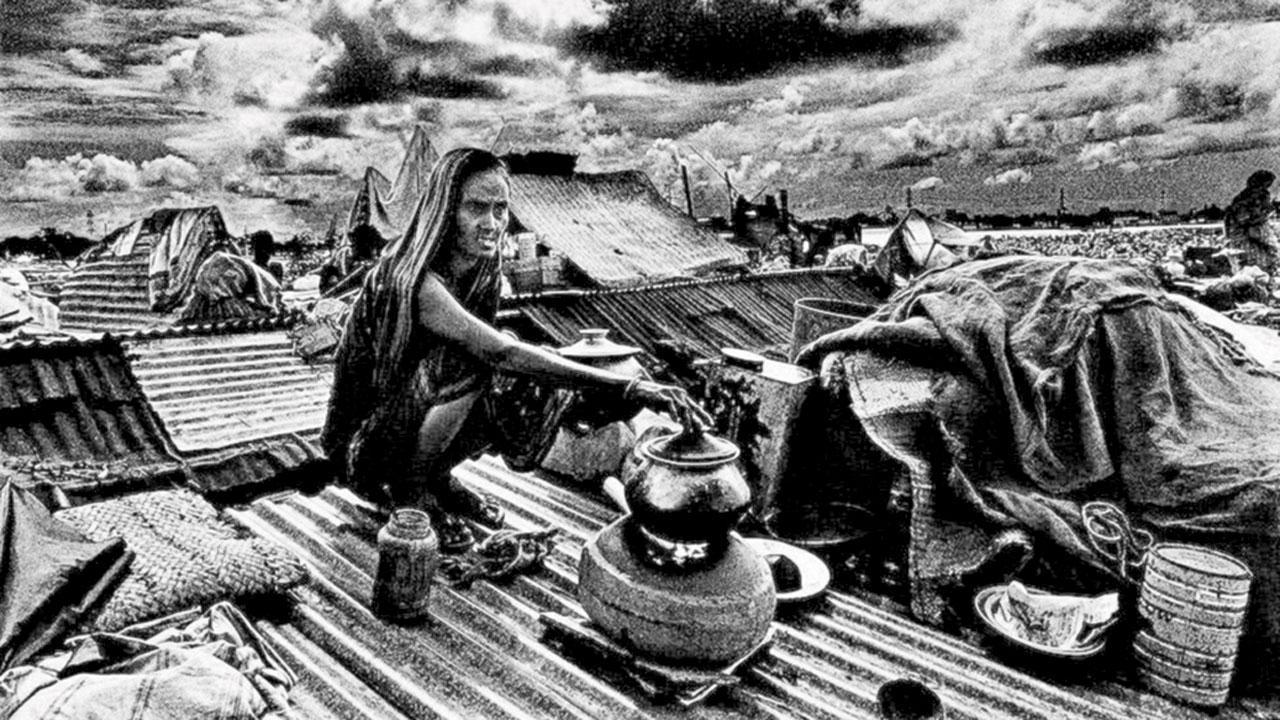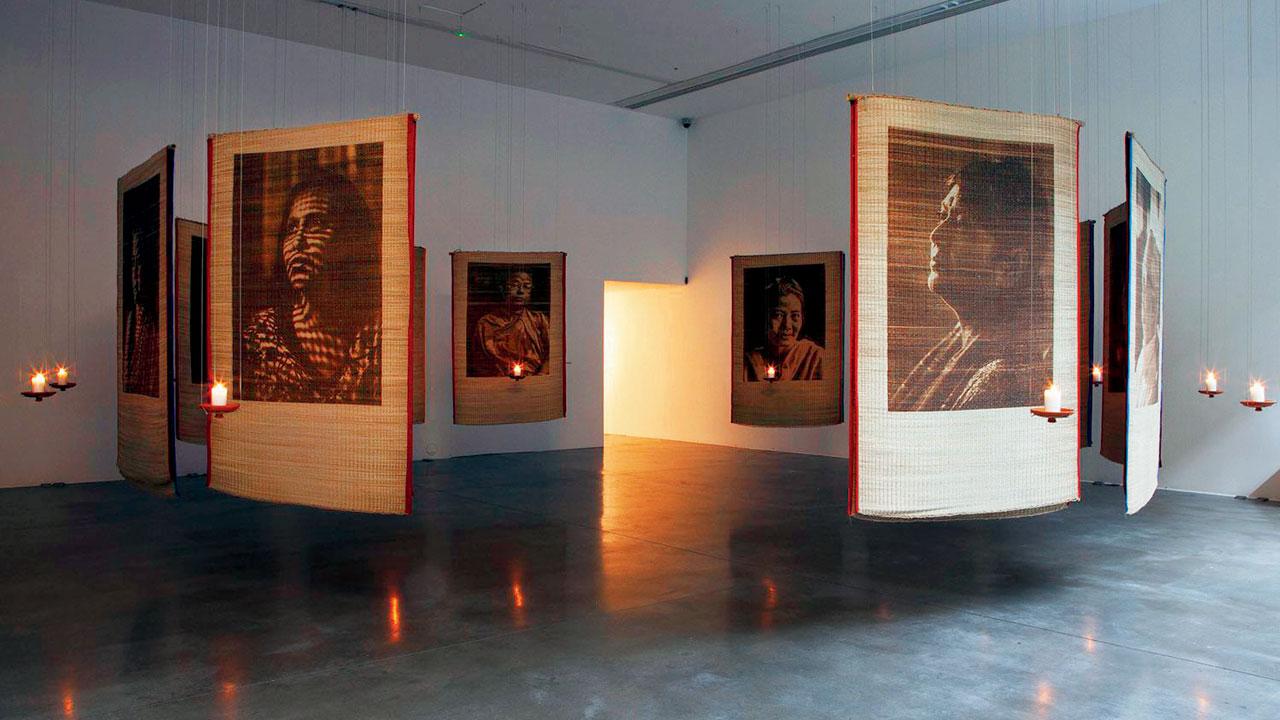In renowned photojournalist and activist Shahidul Alam’s retrospective exhibition, Singed but Not Burnt, the viewers come face to face with daily life and political strife in Bangladesh

Award winning photojournalist and activist Shahidul Alam’s photograph of a woman cooking on a rooftop in cyclone-hit Jinjira, Dhaka in 1988 is one of his many works to be showcased at the Singed but Not Burnt exhibition. PICS/SHAHIDUL ALAM
How does one know history? Is it through the texts we were told to learn word-to-word, top to bottom? Is it the stories our grandparents tell us? Is it the silence that would follow at the dinner table when you’d ask about your family’s past? Or is it the pages that are torn away from history books when those in power choose to retell it?
In 1980, Shahidul Alam, a 25-year-old Bangladesh native, bought a Nikon FM camera while travelling North America. It was meant for a friend, but when the friend couldn’t reimburse Alam, the latter kept it for himself. Then a chemistry student in London, the accidental photographer is now one of the most renowned photojournalists and activists in the world.

Alam’s picture of Begum Khaleda Zia when she was contesting the prime ministerial elections against Sheikh Hasina-led Awami League
Named TIME Person of the Year in 2018, Alam is also an educator and institution builder. He went on to establish Pathshala South Asian Media Institute and Drik Picture Library, and start Chobi Mela, Asia’s longest-running photo festival. Now, a retrospective exhibition of his works, curated by writer, biographer, art curator, and collector Ina Puri, is set to open at Sakshi Gallery, in collaboration with Emami Art. Titled Singed but Not Burnt, the curated collection highlights his ethos as a documentarian.
Puri admits that putting together a retrospective for an artist like Alam, whose career spans up to four decades, was no easy feat. They met at the first Kochi-Muziris Biennale in 2012. Soon enough, she’d be in Dhaka, flipping through his vast archives to put this exhibit together.

Due to spatial constraints, the photo series “Kalpana Warriors” will not be part of the exhibit at Sakshi Gallery. The project was initiated in remembrance of Kalpana Chakma, an indigenous rights activist and leader from CHT, Bangladesh. Chakma was abducted at gunpoint by military officers and village men never to be heard from again. Kalpana’s Warriors gallery installation at Autograph, London. Pic/Zoe Maxwell
“You know, you just don’t get into activism,” Ina remarks. “Before he became known as a journalist and as an activist, he was just a student.” The exhibition features not only his own photos but also visuals that allow visitors to glimpse into moments of his life that are seldom heard about. These visuals include models by his niece, Sofia Karim, that create a layout of the Keraniganj Jail, where Alam was incarcerated for 107 days in 2018 for openly criticising Bangladesh’s tenth Prime Minister, Sheikh Hasina.
An ode to resistance, the exhibition first came to India in 2022 at Emami Art, Kolkata. It was then that Geetha Mehra, director of Sakshi Gallery, discovered the curation. In no time, she reached out to the organisers to bring it to Colaba. What Mehra, as a long-time admirer of Alam’s work, is particularly fond of is his use of photography as a medium. “He uses the medium to push his activism without ever compromising the quality of his photographs. The images stand as artworks in themselves.” The exhibition is an edited version of the one displayed in Kolkata, revised by Alam himself.

(Right to left) Shahidul Alam, his partner, Rahnuma Ahmed and Ina Puri, who has curated the retrospective exhibition
The meticulously selected photographs include Alam’s famous image of a woman cooking on a rooftop in cyclone-hit Jinjira, Dhaka, in 1988, from his series, Truth to Power. His photographs of two-time Bangladesh PM Khaleda Zia’s hopeful election campaign in the background of dictator Hussain Muhammad Ershad’s military regime and the years-long documentation of the extrajudicial killings of the indigenous population in Chittagong Hills weave the story of a young country grappling with autocratic structures.
The exhibition demands contemplation about the socio-political zeitgeist of the sub-continent. As he told mid-day, “The exhibition, I hope, not only alerts us to the dangers of tyrannical regimes but also provides hope that they can be overcome. If this exhibition, by demonstrating the commonalities of our [India and Bangladesh] circumstances and possibilities, shows that there is light at the end of the tunnel, it will have served a purpose.” Through his work, Alam comes across as a journalist and social activist dedicated to questioning authority, getting singed in the process but not burnt.
WHAT: Singed but Not Burnt
WHEN: April 25 onwards
WHERE: Sakshi Gallery, Colaba
 Subscribe today by clicking the link and stay updated with the latest news!" Click here!
Subscribe today by clicking the link and stay updated with the latest news!" Click here!








